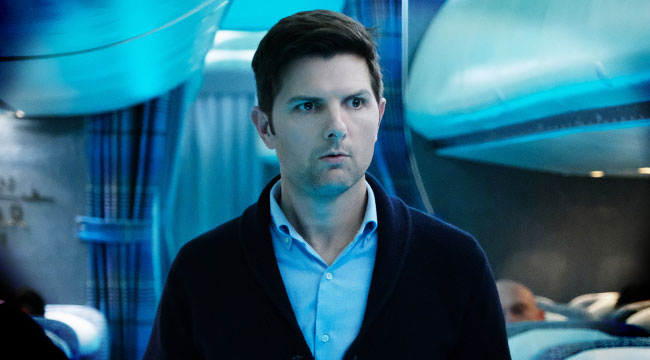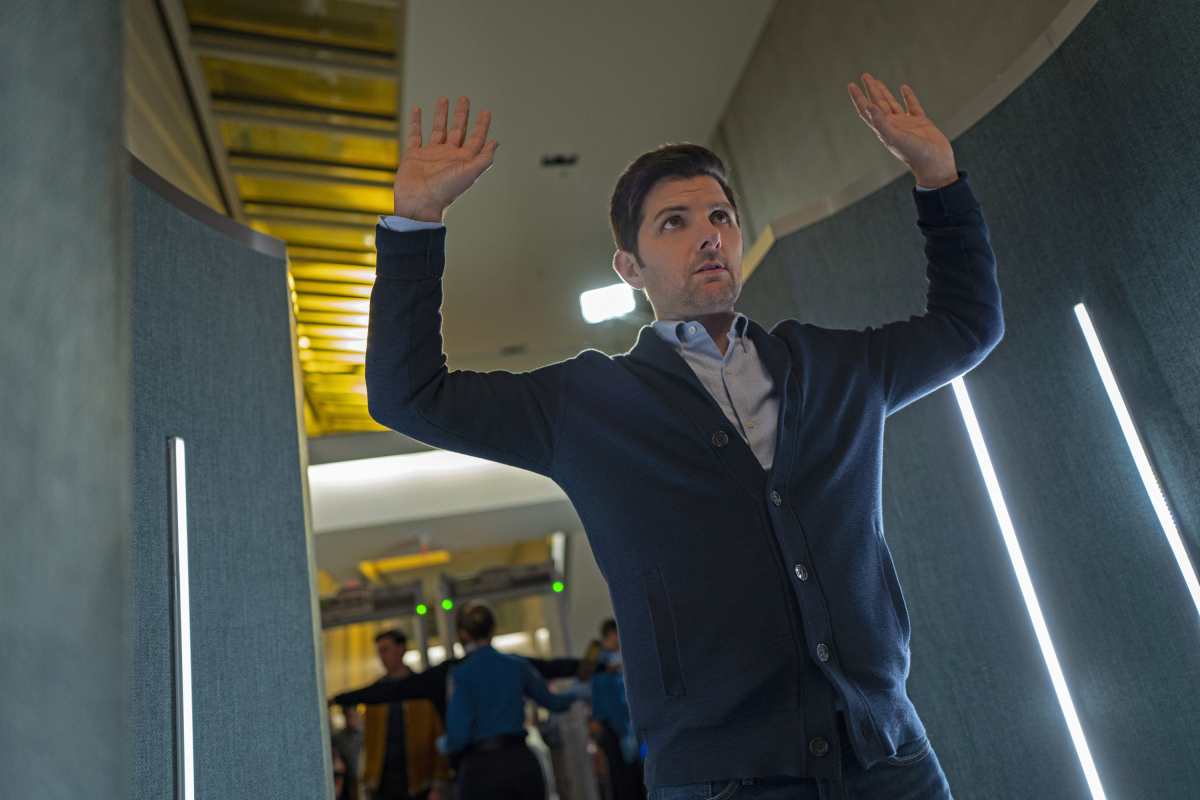
Portrait of a remake that is both familiar and unfamiliar. One that feeds our need for nostalgia while also saying something relevant about this specific time and place and our specific anxieties. Apparently, such a thing can exist in the Jordan Peele-fronted Twilight Zone and in its clever reworking of the Richard Matheson-penned/Richard Donner-directed classic episode, “Nightmare At 20,000 Feet.”
One of the original Twilight Zone‘s best-remembered episodes, “Nightmare” was already remade for a segment in the 1983 Twilight Zone movie with John Lithgow subbing in for William Shatner as the tormented passenger. But while the changes in that version are mostly on the surface — plenty of tight shots and a comically over-the-top lead performance (Shatner was comparatively restrained in the 1963 original) — the foundation remains unchanged. A man with a fragile mind boards a plane and begins to be consumed by fear and paranoia as he sees some kind of unimaginable monster on the wing. He tries to save everyone on the plane and ultimately winds up on a stretcher en route to a mental hospital.
“Nightmare At 30,000 Feet,” the 2019 version of the story with Adam Scott in the lead role, does not end like that, preferring a far darker comment, one that speaks to how a mob can slip out of the skin of civility and embrace wrath. But the path to the episode’s conclusion also takes plenty of twists and turns that will feel unfamiliar to fans of the original and its initial successor. And that’s a good thing.
The meat and potatoes terror of the original still packs a wallop, playing on the inherent unease about unnaturally soaring through the air in a plane and our easily-activated sense of dread, to say nothing of the universal fear that we could, at any point, slip from our grip on reality. But Jordan Peele and Marco Ramirez were smart to keep those fears front of mind while also making their version a bit more dense.

Investigative journalist Justin Sanderson (Scott) boards his plane with a history of mental breakdowns (just like Shatner’s character) and a mantra about letting go of the past, but his panic is slow to boil, not sudden, thanks to the absence of a powerful visual prompt to freak out. Because of this, we get to learn a little more about Justin and the writers get to say more about the world. The episode touches on the state of our paranoia and always-on suspicion (perhaps heightened by malignant political theater), our biases and how we try to forcibly resist them, and our desperate attempts to seize control and figure things out as a pushback against helplessness. And there are, of course, mysteries (the podcast, whether or not Joe is real) that are left to interpretation. Or, perhaps, they’re left to further exploration in other episodes, since there are clues that these episodes are somewhat connected.
When you combine the full meal of that story with the ending, a rattled but determined Adam Scott, and excellent cinematography that doesn’t force feed us with a feeling of claustrophobia (choosing to, instead, let the action play out plainly), “Nightmare At 30,000 Feet” takes the form of the first great episode of this new Twilight Zone run (“The Comedian,” while really good, suffers from its bloated run time). It’s also a refresher course in how to update a beloved work thanks to the creative boldness that powers it.
The Twilight Zone and “Nightmare At 20,000 Feet” are revered, and with that reverence comes a want by those who hold it dear to protect it. But oftentimes that desire crushes the joy right out of the new thing (and maybe the old thing) as every microscopic pivot is scrutinized. But really, what’s the answer? If you stick too close to the material, like Gus Van Sant’s attempt at a shot for shot remake of Psycho, your work is dismissed as boring and pointless (I’m summarizing). If you go too far in your efforts to make something new out of something old, it’s treated as sacrilege by some. Witness Paul Feig’s Ghostbusters film. “Nightmare At 30,000 Feet” definitely feels more like the latter in terms of its willingness to go in a new direction (with a few fan service nods thrown in). Maybe that’s a problem for some, but is there a point in remaking something if you aren’t going to get in there and shake things up?
Sweeping changes to a beloved thing are necessary when you want to make it feel right and resonant for this moment. Peele gets that and he also gets that there’s a responsibility to say something and do something a little different when reaching for Rod Serling’s mantle as a storyteller, provocateur, and bender of tropes with The Twilight Zone. (Which, obviously, as Get Out and Us demonstrate, he is capable of.) Sentimentality can’t be a factor. Classic stories and concepts aren’t things that should be gently carried from one generation to the next on a pillow and kept behind inches-thick glass safe from bother. These stories should be smashed into tiny pieces, merged with new ideas, and then repurposed into something that can be interpreted, reinterpreted, and judged against the original and the truths these new versions speak too. Because that’s where the art is, that’s where the fun is, and that’s how you keep these things alive.
The ‘Twilight Zone’ is available to stream on CBS All Access with new episodes coming out on Thursdays (starting April 11).






